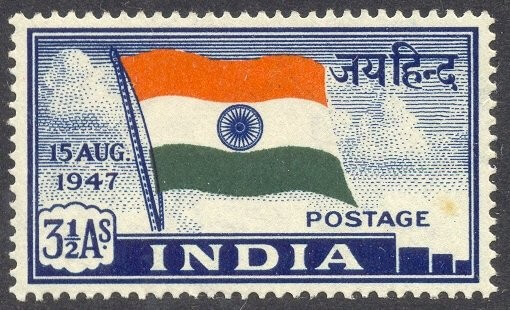Tales of oracles and miracles have survived for about two hundred years surrounding a Shiva temple, known as Buro Shib, beside the Ganga, near the port of Budge Budge, on the outskirts of Kolkata. On the last day of the Bengali year (usually the 14/15 April) the branch floats up. This branch is positioned straight and set in the soil. This works at the pivot pole on which two crisscrossed bamboos is set up on a rotating peg. Each of these bamboo ends has a hanging rope with a metal hook attached to it. Devotees hook this into the flesh on their back and then are spun around. The flesh tears and they fall. The pilgrims consider this their penance. The torn flesh is dabbed with the soil from around the Ling. Today, the Charak tree is no more. But the ritual of Jhaap, Bann Phora (Needling into the skin) and the Mela is still there. Sisir tells us about this strange ritual that connects us to our past, exclusively in Different Truths.
In a small township on the banks of the Ganga, near the port of Budge Budge, is a temple of Lord Shiva. It is the temple of Buro Shib. It is one of the oldest temples of the area of Nangi village, so the entire area surrounding the temple is called Buro Shibtola, of which the literal translation means the abode of Old (Wise) Shiva.
People of the region consider this Shiva to be very auspicious. It is said that whoever asks Lord Shiva for a wish with utmost sincerity, the Lord fulfills it.
wish with utmost sincerity, the Lord fulfills it.
The history of this temple has no written records. The stories carried around by oral tradition is almost accurate. According to the story, the Shiva Ling was submerged in a shallow pond. The King of Bardwaan had a dream in which Lord Shiva had asked him to rescue the Ling and establish it as a temple.
The King acted per the Oracle and constructed a small temple canopy of straw and bamboo. He appointed Shobhamoy Bandhopadhya as the priest of the Shiva Ling.
It is said that the Shiva Ling grew or rose slowly as it was offered prayers every day. The miracle and tales of the Shiva Ling spread far and wide. Soon there were many followers. With the increase of popularity, a tin shed was constructed around the Ling to give it a temple-like appearance.
Approximately two hundred years ago, a merchant named Nagen Ghosh decided to make a temple of concrete for this Shiva Ling. He also had a similar Oracle of Lord Shiva in his dreams. He was instructed to construct a proper temple for the pilgrims to have a place to worship.
Devotees lined up to this temple from far and beyond. They all brought their grievances and needs as prayers to Lord Shiva. The Lord would appear in their dreams and divulge the secret of alleviating their problems. Soon, this Lord Shiva gained name for being the most fruitful and boom granting Shiva. Originally this Ling was called “Dubo Shib” (Submerged Shiva). Soon it people were addressing this Shiva as “Buro Shib”.
The Zamindar (landlord) of that area, the Chatterjees, recognised the importance of the Shiva temple. They brought in some Bhramins from Dhaka. These were to be the official priests of this temple. The priests were given land to build homes and their families could reside with them.
The soil around the Shiva Ling is considered to possess magical powers. The devotees are given little bit of this soil to help their problems get resolved. There are snakes living around the Ling, but the priest has never been bitten by any.
There is a story of a greedy villager, who sold the jeweled snake ornament of the Shiva Ling. The person who bought it could not sleep at night. He had nightmares of snakes. After some sleepless nights, he returned the jeweled snake ornament to the temple.
As most old temples, this Shiva temple has many stories. Buro Shibtola is almost between two stations, Nangi and Budge Budge. As the story goes, during the British period, the railway line was to be constructed over the temple. But no elephants or the workers could uproot the Ling. Most of the elephants and workers died of snake bites. This created panic among the laborers and they refused to work. The officers had to change the route of the railway line. Today, the railway track lies far from the temple.
 During Neel Shashti (the sixth day after the full moon of the Bengali month of Chaitra) the marriage of Lord Shiva is celebrated. On this day, a huge festival takes place. Devotees from all over flock to the temple for prayers and offerings.
During Neel Shashti (the sixth day after the full moon of the Bengali month of Chaitra) the marriage of Lord Shiva is celebrated. On this day, a huge festival takes place. Devotees from all over flock to the temple for prayers and offerings.
Beside the Buro Shib there is a small Shiv Ling, called the Sada Shib (White or Simple Shiva). This Ling emerged in the Bera household. The family worshiped it. But, as the Berars lost their wealth, they donated the Shiv Ling to the temple. During the Charak Shankranti festivity would pick up in full gear. At present, the worship of Sada Shib and the Charak Mela, both happen in the premises of Buro Shibtola.
The Charak Mela, a fair, is held in that area. The Charak Mela is a very interesting fair, as other than food and artifacts sold in it, it had the famous Jhaap (jump).
The Charak Shankranti started almost hundred years back. This was initiated again by the King of Burdhawan. He brought the Charak Tree, a native of the tropical region, and planted it near the temple for the festival. A straight, thick and long branch of this tree is kept under water for a year. On the last day of the Bengali year (usually the 14/15 April) the branch floats up. This branch is positioned straight and set in the soil. This works at the pivot pole on which two crisscrossed bamboos is set up on a rotating peg. Each of these bamboo ends has a hanging rope with a metal hook attached to it.
Devotees hook this into the flesh on their back and then are spun around. The flesh tears and they fall. The pilgrims consider this their penance. The torn flesh is dabbed with the soil from around the Ling.
Those who pray for a definite wish, they take the life of an ascetic from the first day of the month of Chaitra. They were saffron colored clothing and beg for alms from home to home. They ask for uncooked food, like rice, lentil, and vegetables. At each door, they call out, “Buroshib er chorone sheba lage, Mahadev.” (Let your alms be a prayer to the feet of Mahadeva, another name of Shiva.) This call denotes them to be devotees of Shiva and usually, people give them alms. The devotees fast the whole day, and at the end of the day, they pray to Shiva and cook food from the alms they received.
Today, the Charak tree is no more. But the ritual of Jhaap, Bann Phora (Needling into the skin) and the Mela is still there. On the last day of Chaitra, the temple comes alive with festivity. For the Bann Phora, devotees have their body pierced by big needles. The soil around the Ling, is again used as ointment where the needles pierce the skin. They also light up cotton balls soaked in oil on their palm. On the beat of the drums, they dance around the temple. Devotees have their own way to show their reverence to Buro Shib. When they get tired, they take the needles out and pray.
The devotees have another way of testing their faith. From a high platform, the devotees jump on sharp knives attached to woods. These are kept on huge piles of straw and gunny bags. This fall is called the Jhaap, in other words, it is the leap of faith. If anyone of them suffers a cut or is hurt, they are again applied with the soil from around the Ling.
In the olden days, there used to be many such daring rituals to test the faith of the devotees, but now with all the restriction in force, they have dwindled to only the Bann Phora and the Jhaap.
The stories surrounding the Buro Shibtola Temple and all the festivity related to it was narrated to me by Dilip Bhattacharya, one of the temple priests.
(Translated from Bengali by Anumita Chatterjee Roy)
©Sisir Kumar Chatterjee
Photos (shot last year) and sketch by the author
#BuroShibTola #CharakShankranti #Jhaap #Shiva #TalesOfTemple #ShivTemple #Festivity #ReligiousBelief #Faith #DifferentTruths




 By
By
 By
By
 By
By
 By
By